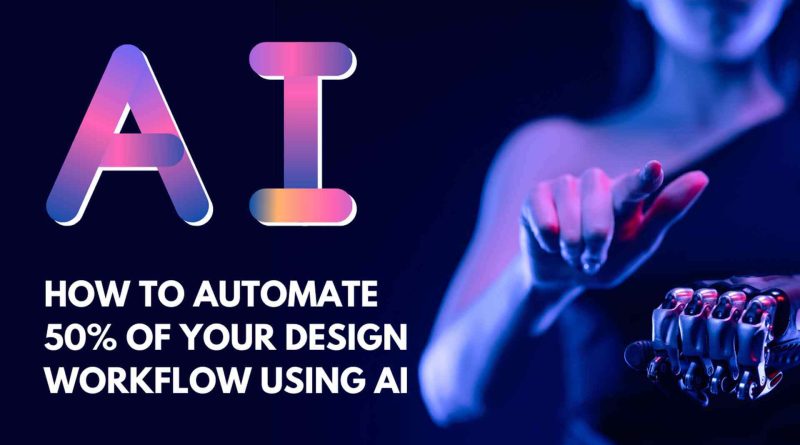How to Automate 50% of Your Design Workflow Using AI
In today’s fast-paced digital design world, time is money. Whether you’re a solo designer or part of a creative team, managing your workload efficiently is a game changer. AI is more than a buzzword—it’s a practical tool that can automate repetitive tasks and streamline your workflow. By integrating AI, you can reclaim up to 50% of your time, reduce burnout, and focus on creativity and strategy.
1. Speed Up Concept Generation with AI
Brainstorming and idea generation can take hours. Instead of scrolling through Pinterest or sketching endlessly, use AI tools to generate concepts in minutes. Tools like Midjourney, Adobe Firefly, and DALL·E can create concept art, mood boards, and draft designs from simple text prompts.
For branding, platforms like Looka and Brandmark.io generate brand identity samples based on your input. These tools are great for kickstarting projects and offering clients early visual options.
2. Automate Repetitive Design Tasks
Once a concept is approved, production begins. This stage often involves repetitive tasks like resizing and formatting. Tools like Canva’s Magic Resize and Adobe Express convert designs for multiple platforms with one click.
Photoshop and Illustrator now offer AI-powered features like background removal, object selection, and generative fills. What once took 30 minutes can now be done in under five.
3. Boost Content Creation
Design and copy go hand in hand. If writing isn’t your strength, AI tools like ChatGPT, Jasper, and Copy.ai can generate headlines, product descriptions, and ad copy tailored to your design.
Use Grammarly or Hemingway Editor to polish your text. Clear, concise copy leads to fewer revisions and faster approvals.
4. Organize Images and Assets with AI
Searching for files, fonts, or stock photos wastes time. AI-driven tools like Adobe Bridge and Eagle App auto-tag and categorize assets. They also suggest relevant design elements based on your project.
This smart organization saves hours of manual file management over time.
5. Use AI in UI/UX Design
In web and app design, AI tools like Uizard, Framer AI, and Galileo AI generate UI mockups from text descriptions. This speeds up wireframing and prototyping.
These tools also adapt designs to platform guidelines, suggest navigation flows, and optimize layouts for responsiveness.
6. Automate Feedback and Collaboration
Client feedback can delay projects. AI tools like Figma AI plug-ins and Notion AI summarize feedback, suggest improvements, and generate visual alternatives.
You can also use AI assistants to schedule meetings, send updates, and track revisions. This reduces the need for manual follow-ups.
7. Track Performance with AI Analytics
After launch, AI tools like Adobe Sensei and Hotjar analyze user behavior and engagement. They provide insights through heatmaps and metrics.
Instead of guessing, you’ll know what works and what needs improvement. This leads to smarter, faster design iterations.
Final Thoughts
AI won’t replace designers—it empowers them. By automating up to 50% of your workflow, you can focus on creativity and strategy. The key is to automate repetitive tasks while staying hands-on with artistic decisions.
Start small. Try one AI tool at a time and track how much time you save. Soon, you’ll build a faster, smarter, and more efficient workflow—your edge in a competitive creative world.
